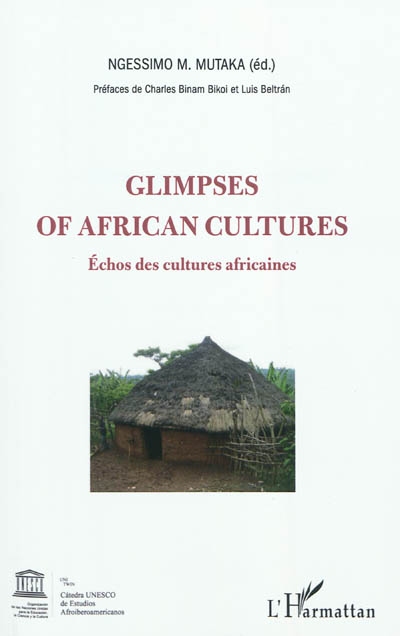l'Harmattan
-
-
Disponible - 39(630) GLI
Niveau 2 - Ethnologie
l'Harmattan
-
Disponible - 39(630) GLI
Niveau 2 - Ethnologie

Cette publication met en lumière la diversité des cultures africaines, du Nigeria au Burundi : cérémonies de mariage, musique traditionnelle, rituels funéraires, croyances, etc. Une somme de savoirs endogènes destinés à empêcher le déracinement et l'aliénation des jeunes générations africaines.

This book covers various aspects of African traditional cultures that include: communication, marriage ceremonies, funerals, traditional rites, witchcraft, traditional cultural activities, and traditional beliefs.
It will undoubtedly appeal to anyone who wants to understand better our African cultures. The reading of some of the stories will certainly raise existential questions about the nature of spirits, truth, and the place of God in the collective mind of the Africans. Some of the questions are the following: how is it possible that a human being has his double in an animal known as his totem? How come that, for people who do not believe in reincarnation, it is the chief who determines the future of the soul of the deceased? In "Mourning habits in the West province of Cameroon," it appears that, if the soul is not taken care of, it will cause physical havoc in the society. Could there be a link between our souls and the physical elements of nature? Is skull worshiping among the Bamileke merely a traditional practice or are they really able to communicate with their ancestors through the skulls? What has led the Aghem people to firmly believe that lakes can physically move, that the dead live in their lakes, that children live in their pre-human state as caterpillars and may transform into reptiles when they are still babies? What makes it possible for the human mind to communicate with animals, exchange messages as is shown in "How animals and things can speak and communicate in the Yambassa culture"? Apart from the physical world as we know it, could there truly be a spiritual world that witches and wizards have access to and which system of values could this spiritual world be subjected to? Every single paper of the more than 80 papers and squibs this book comprises is truly an invitation to explore further the untapped richness of African cultures.
Disponible - 39(630) GLI
Niveau 2 - Ethnologie